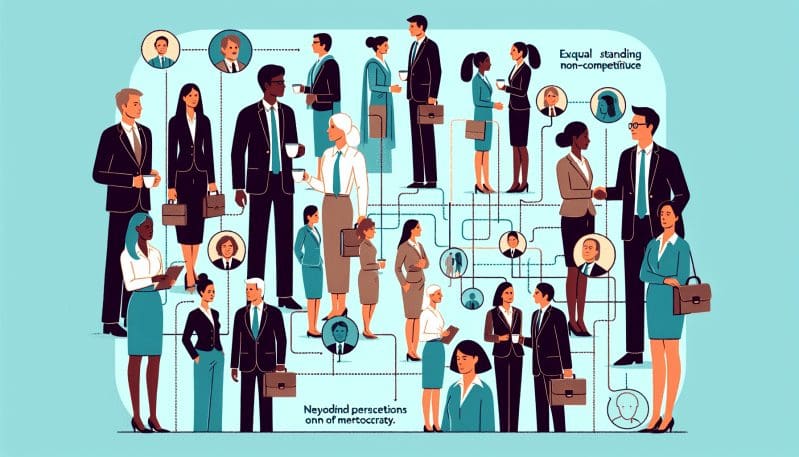Reimagining Professional Networks: Beyond the Meritocracy Myth in the Modern Workplace
- Home
- Reimagining Professional Networks: Beyond the Meritocracy Myth in the Modern Workplace

- Editors Desk
- April 1, 2024
- 0 Comments
In the contemporary labor landscape, the notion of meritocracy is both a beacon of hope and a mirage of fairness. It promises that hard work and talent alone will determine professional success. Yet, critics contend that the current system is far from meritocratic, as it often privileges those with pre-existing connections, thus perpetuating inequality. This discussion gains a new layer of complexity when we consider the role of professional networks in today’s workplace.
Professional networks have always been a cornerstone of career advancement, yet their evolution in the digital age has raised significant questions about equal opportunity. Networking, in essence, is an exchange of social capital, where relationships can open doors that merit and effort might not unlock on their own. It’s a subtle currency that flows more freely for some than for others, often benefiting individuals who already possess social advantages, such as a prestigious educational background or influential acquaintances.
Organizations are beginning to realize that democratizing networking is crucial for ensuring diversity and fostering a fair work environment. Some have taken bold steps to implement practices that reward broad-based engagement and diverse connections. For example, companies like Accenture and Deloitte have initiated networking programs aimed at underrepresented groups within their workforce, helping to bridge the gap between diverse talent and leadership.
Moreover, digital platforms play a dual role in the networking narrative. On one hand, they have the potential to democratize access to professional circles, transcending geographical and social barriers. LinkedIn, for instance, allows for the establishment of connections based on professional interests rather than personal acquaintance. On the other hand, the digital divide and algorithmic biases can reinforce the networking gap, creating echo chambers that limit exposure to diverse perspectives and opportunities.
For readers accustomed to the in-depth coverage of The Washington Post, The New Yorker, and The New York Times, the implications of these networking trends are not just theoretical but practical. They bear directly on the ways in which professionals engage with their industries and societies. Understanding how to navigate and leverage these networks with an eye toward inclusivity is becoming an essential career skill.
The balance between networking and a truly merit-based system remains a delicate one. While interpersonal relationships will always play a role in career trajectories, it’s important not to undermine the value of individual achievement and potential. Strategies for workers looking to reshape their professional networks might include actively seeking out mentorships with individuals from varied backgrounds, participating in industry groups committed to diversity, and employing social media as a tool for professional development rather than mere self-promotion.
The road to a more equitable workplace is long, but the reimagining of professional networks holds promise for a future where opportunity is not predetermined by one’s starting point. It poses a challenge to both organizations and individuals to rethink the ways we connect, collaborate, and succeed.
In conclusion, the myth of meritocracy in professional networks is being deconstructed by a growing awareness of the value of diversity and inclusivity in the workplace. By fostering networking practices that prioritize these values, we can create a labor market that truly rewards talent, ambition, and, above all, fairness.

Leave A Comment